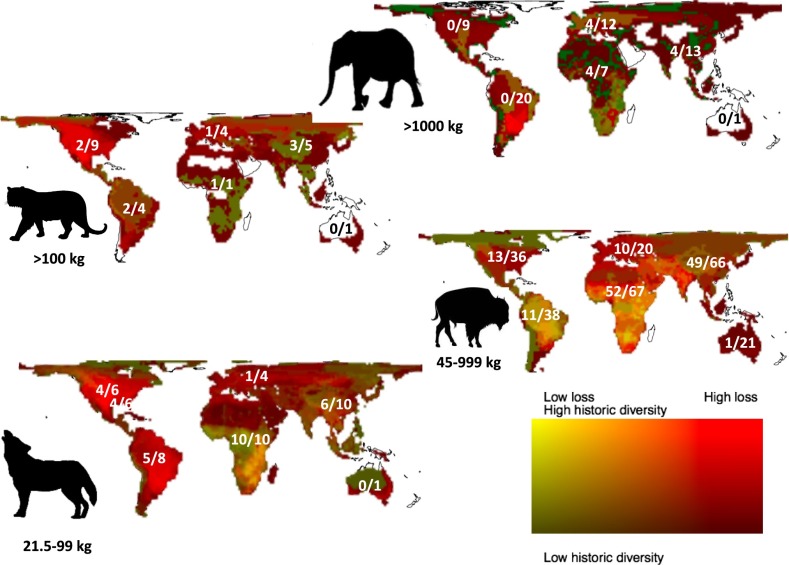Fig. 1.
Extant and lost megafauna, divided by continent and into megaherbivores (≥1,000 kg), megacarnivores (≥100 kg), large herbivores (45–999 kg), and large carnivores (21.5–999 kg). Carnivores prey on the guilds below them, and to some extent on juveniles of herbivores above them. Megacarnivores can also limit the activity and abundance of the next-size class of carnivores (21.5–99 kg) by excluding them from prime habitat or killing them outright In each continent. The first number indicates the number of species remaining (often in greatly reduced abundance and restricted range), and the second number indicates how many would have existed in a Late Pleistocene baseline. Data from ref. 44. Background colors indicate prehistoric diversity and relative loss rate in each guild. Yellow/light green shows areas of high intrinsic megafaunal diversity and low loss (e.g., large herbivores in Africa), dark green indicates low historic diversity and low loss (e.g., large herbivores in high latitude North America), red indicates high diversity and high loss (e.g., Americas), and dark brown indicates low diversity and high loss (e.g., high latitude Eurasia).

